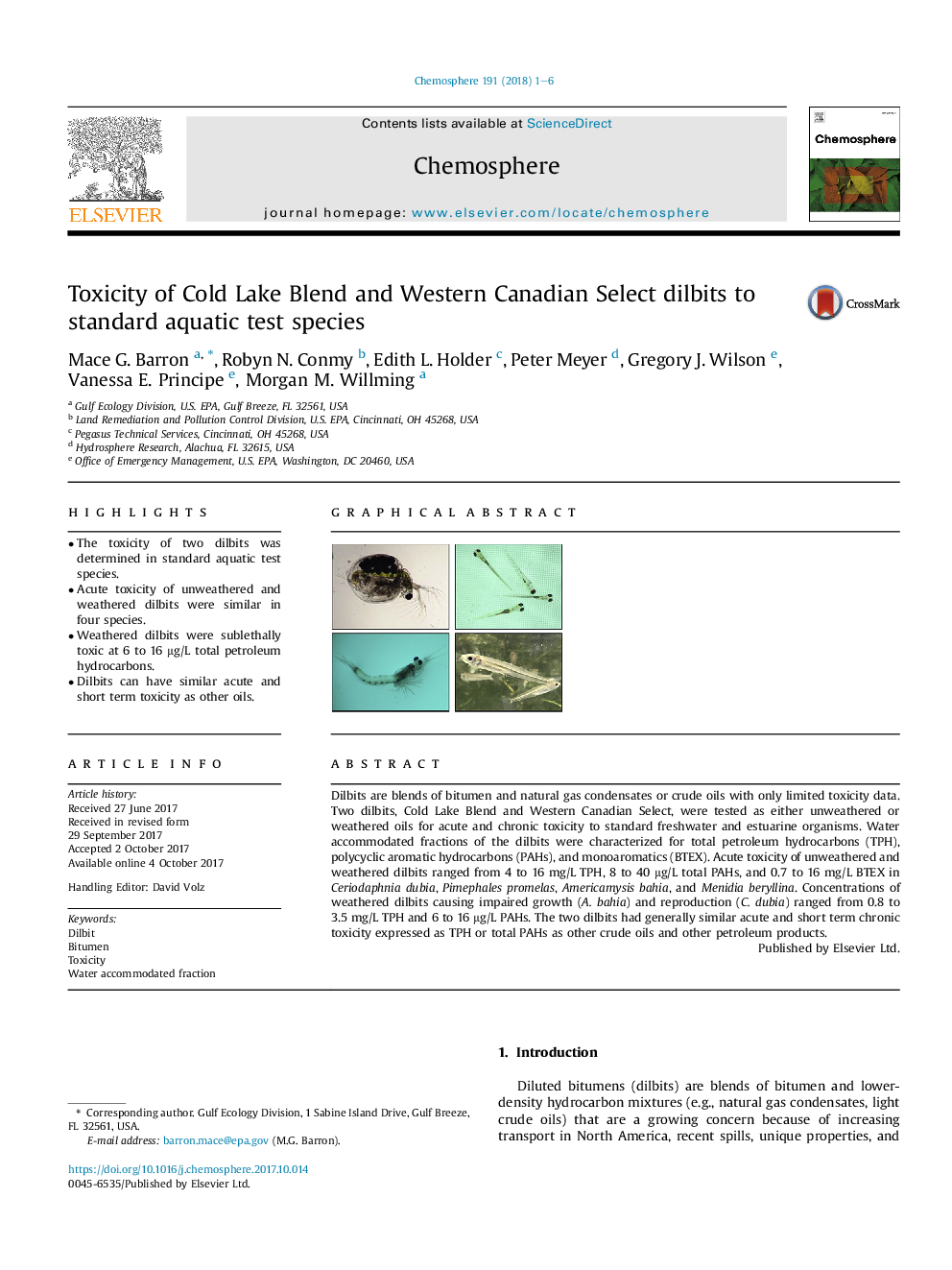| Article ID | Journal | Published Year | Pages | File Type |
|---|---|---|---|---|
| 5745703 | Chemosphere | 2018 | 6 Pages |
â¢The toxicity of two dilbits was determined in standard aquatic test species.â¢Acute toxicity of unweathered and weathered dilbits were similar in four species.â¢Weathered dilbits were sublethally toxic at 6 to 16 μg/L total petroleum hydrocarbons.â¢Dilbits can have similar acute and short term toxicity as other oils.
Dilbits are blends of bitumen and natural gas condensates or crude oils with only limited toxicity data. Two dilbits, Cold Lake Blend and Western Canadian Select, were tested as either unweathered or weathered oils for acute and chronic toxicity to standard freshwater and estuarine organisms. Water accommodated fractions of the dilbits were characterized for total petroleum hydrocarbons (TPH), polycyclic aromatic hydrocarbons (PAHs), and monoaromatics (BTEX). Acute toxicity of unweathered and weathered dilbits ranged from 4 to 16 mg/L TPH, 8 to 40 μg/L total PAHs, and 0.7 to 16 mg/L BTEX in Ceriodaphnia dubia, Pimephales promelas, Americamysis bahia, and Menidia beryllina. Concentrations of weathered dilbits causing impaired growth (A. bahia) and reproduction (C. dubia) ranged from 0.8 to 3.5 mg/L TPH and 6 to 16 μg/L PAHs. The two dilbits had generally similar acute and short term chronic toxicity expressed as TPH or total PAHs as other crude oils and other petroleum products.
Graphical abstractDownload high-res image (255KB)Download full-size image
